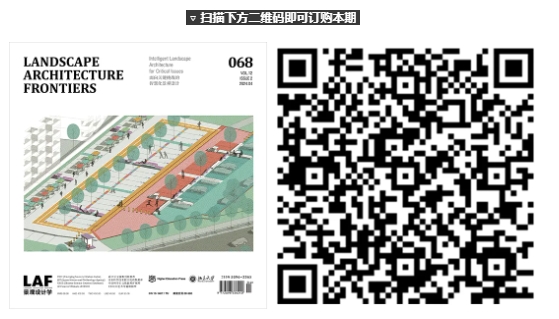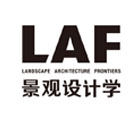導(dǎo)讀
在向數(shù)字化低碳城市規(guī)劃設(shè)計(jì)方向轉(zhuǎn)型的過程中���,碳排放量化評估是關(guān)鍵一環(huán)。本文分別在城市尺度和片區(qū)/街區(qū)尺度上對多種典型的數(shù)字化碳排放評估工具進(jìn)行了綜述���,并總結(jié)了工具評估的維度和參考依據(jù)�?���?偟膩碚f,現(xiàn)階段基于能源系統(tǒng)規(guī)劃和運(yùn)營能耗模擬的評估工具仍占主導(dǎo)��;隨著碳排放預(yù)測的精細(xì)化發(fā)展趨勢和脫碳政策重點(diǎn)的轉(zhuǎn)變���,基于用地類型和材料的碳排放預(yù)測和碳匯估算工具也發(fā)展迅速�����。然而��,這些工具目前在城市規(guī)劃設(shè)計(jì)實(shí)踐項(xiàng)目中的應(yīng)用有限�����,特別是在初期階段�。因此���,本研究繼而通過分析未應(yīng)用數(shù)字化評估工具的低碳實(shí)踐案例���,指出:未來,應(yīng)提高工具的靈活性和場景適應(yīng)性�����,構(gòu)建完善的數(shù)據(jù)庫,兼顧運(yùn)營碳���、隱含碳和碳匯計(jì)算����,契合多維度�、多標(biāo)準(zhǔn)、全流程的評估需求��。
關(guān)鍵詞
低碳城市�����;碳排放�����;碳排放評估工具���;城市規(guī)劃設(shè)計(jì)��;數(shù)字化����;碳匯
邁向數(shù)字化的低碳城市規(guī)劃設(shè)計(jì):
碳排放評估工具演進(jìn)與應(yīng)用回顧
Towards Digitalized Urban Planning and Design of Low-Carbon Cities:
Evolution and Application Review of Assessment Tools

01引言
目前,國內(nèi)外低碳城市建設(shè)的重點(diǎn)已從宏觀層面的概念梳理逐漸轉(zhuǎn)向微觀層面的具體問題分析和數(shù)字化技術(shù)的運(yùn)用��。然而��,現(xiàn)有的碳排放評估工具(下文簡稱為“評估工具”)相關(guān)綜述研究主要存在以下幾點(diǎn)局限性����。首先�����,對評估工具的綜述主要關(guān)注能源系統(tǒng)規(guī)劃設(shè)計(jì)和建筑全生命周期評估兩方面��。第二���,現(xiàn)有的綜述研究往往聚焦單一尺度或?qū)W科����,缺乏跨尺度�����、跨學(xué)科的系統(tǒng)分析。第三��,評估工具雖呈多樣化發(fā)展趨勢����,但仍未廣泛應(yīng)用到規(guī)劃設(shè)計(jì)實(shí)踐中。
本文從功能特點(diǎn)����、評估維度和適用場景等方面對評估工具進(jìn)行系統(tǒng)性梳理和比較研究,并根據(jù)具體應(yīng)用情況探討其存在的不足�;最后,本文將總結(jié)各類評估工具的發(fā)展趨勢��,指明潛在發(fā)展方向�,為未來低碳城市規(guī)劃設(shè)計(jì)研究和實(shí)踐提供參考。

碳排放評估工具綜述研究框架 ? 徐萌��,仲玥����,葉宇
02研究方法
本文利用谷歌學(xué)術(shù)進(jìn)行文獻(xiàn)篩選和驗(yàn)證。首先����,檢索了1980年1月1日至2023年12月31日發(fā)表的文獻(xiàn)���,檢索關(guān)鍵詞包括“carbon assessment tools”“carbonemission evaluation”“l(fā)ow carbon urban planning”“l(fā)ow carbon urban design”“l(fā)ow-carboncity””urban energy planning”“carbon-neutral city”“碳排放評估工具”“低碳評估指標(biāo)體系”“碳排放評估工具綜述”“零碳城市”“零碳規(guī)劃”“減碳技術(shù)”“碳中和城市規(guī)劃”。隨后選取多次被提及的評估工具����。此外,本文選取了部分創(chuàng)新性強(qiáng)��、代表近期發(fā)展趨勢且開發(fā)相對成熟的工具����。最后��,對所得工具進(jìn)行初步分類���,每類中官方介紹較為詳細(xì)�、完善的工具被保留并用于最終分析����。
03研究結(jié)果
評估工具概述
本文共檢索到19個(gè)評估工具,按照尺度和功能將其劃分為兩大類(表1):第一類工具主要用于輔助城市尺度的規(guī)劃政策制定��;第二類工具主要用于評估片區(qū)/街區(qū)尺度的規(guī)劃設(shè)計(jì)方案�。
碳評估工具的開發(fā)和演進(jìn)與低碳政策及相關(guān)需求的發(fā)展息息相關(guān)���。首先,城市和片區(qū)/街區(qū)尺度上的碳評估工具從20世紀(jì)80年代開始出現(xiàn)��,在近十年顯著增多���。片區(qū)/街區(qū)尺度的評估工具近些年的發(fā)展增速尤為明顯���,這反映了低碳評估精細(xì)化發(fā)展趨勢,以及脫碳政策重點(diǎn)的轉(zhuǎn)變�����。

碳評估工具發(fā)展趨勢(圓圈標(biāo)注的One-Click LCA 和Tally 工具出現(xiàn)較早���,用于建筑的隱含碳評估)��。? 徐萌�����,仲玥���,葉宇
城市尺度碳評估工具
按照功能���,城市尺度的碳評估工具主要分為能源系統(tǒng)和政策分析、城市氣候政策分析和基于用地類型的碳排放預(yù)測三類�。
1)能源系統(tǒng)和能源政策分析類工具:評估不同能源規(guī)劃戰(zhàn)略和情景下的碳排放,預(yù)測資金����、成本和對環(huán)境變化的影響,主要涉及能源系統(tǒng)及電力���、供熱制冷等相關(guān)領(lǐng)域����。
2)城市氣候政策分析類工具:綜合性較強(qiáng)�,通常涉及建造業(yè)�、交通運(yùn)輸、工業(yè)等跨系統(tǒng)規(guī)劃�。

城市氣候政策分析類工具CURB ? World Bank Group
3)基于用地類型的碳排放預(yù)測類工具:基于真實(shí)地塊的土地利用類型變化來預(yù)測城市在不同發(fā)展情景下的碳排放水平。近年來�����,大量研究學(xué)者著手探索更加精細(xì)化的碳排放預(yù)測方法,但其發(fā)展尚處于起步階段�。

基于用地類型的碳排放預(yù)測類工具CarbonVCA操作界面 ? UrbanComp

CarbonVCA技術(shù)路線圖 ? 徐萌,仲玥���,葉宇
綜上����,城市尺度碳評估工具通過預(yù)測碳排放對政府部門的政策制定起到指導(dǎo)作用�����。碳排放預(yù)測呈現(xiàn)精細(xì)化趨勢�,基于宏觀統(tǒng)計(jì)數(shù)據(jù)的預(yù)測相對成熟,而基于微觀地塊和城市空間特征的碳排放預(yù)測仍待探索�。
片區(qū)/街區(qū)尺度碳評估工具
現(xiàn)有的碳評估工具大致可分為運(yùn)營能耗模擬與隱含碳和碳匯估算兩大類。
1)運(yùn)營能耗模擬類工具:此類工具出現(xiàn)較早��,主要根據(jù)氣候信息和建筑特征等數(shù)據(jù)預(yù)測建筑和片區(qū)的運(yùn)營能耗����。其中,一部分工具致力于從多個(gè)可持續(xù)維度的評估(包括碳評估)來輔助早期方案設(shè)計(jì)����;另外一部分工具側(cè)重于片區(qū)/街區(qū)尺度的能耗預(yù)測和能源系統(tǒng)優(yōu)化,可支持高精度實(shí)時(shí)運(yùn)營碳排放的預(yù)測,并將城市形態(tài)作為重要因素納入能耗計(jì)算����。

運(yùn)營能耗模擬類工具umi能源需求計(jì)算示意圖 ? MIT Sustainable Design Lab

umi技術(shù)路線圖 ? 徐萌,仲玥�����,葉宇
2)隱含碳和碳匯估算類工具:雖然有少數(shù)運(yùn)營能耗模擬類工具也兼具隱含碳評估的功能����,但其只量化建筑建設(shè)和改造產(chǎn)生的隱含能源消耗,不涉及景觀等其他城市環(huán)境和設(shè)施����。新興碳評估工具將焦點(diǎn)從運(yùn)營碳轉(zhuǎn)向隱含碳,可根據(jù)用地類型和材料等數(shù)據(jù)預(yù)測各尺度項(xiàng)目的隱含碳和碳匯�,尤其考量大尺度項(xiàng)目的環(huán)境影響。

隱含碳和碳匯估算類工具Carbon Conscience官網(wǎng)頁面 ? SASAKI

Carbon Conscience技術(shù)路線圖 ? 徐萌�����,仲玥����,葉宇
綜上,目前在片區(qū)/街區(qū)尺度上仍缺乏綜合考量運(yùn)營碳和隱含碳���,同時(shí)集成氣候����、能源系統(tǒng)��、用地類型和材料等數(shù)據(jù)的綜合性評估工具���。
評估維度及參考數(shù)據(jù)
根據(jù)城市各系統(tǒng)的能源需求��、碳排放量和可持續(xù)發(fā)展要素等��,研究分別總結(jié)上述城市尺度和片區(qū)/街區(qū)尺度碳評估工具(表2)�����。

在城市尺度上���,建筑、工業(yè)����、商業(yè)和交通運(yùn)輸是碳評估工具的共性維度���。其他主要維度包括電力、污水處理和固體垃圾管理等方面�����。這些工具主要依照宏觀經(jīng)濟(jì)和土地利用能耗數(shù)據(jù)對各維度進(jìn)行量化評估�,更新周期長、數(shù)據(jù)開放度低的特點(diǎn)���,會(huì)從根本上影響評估的準(zhǔn)確性和適用性����。
1)經(jīng)濟(jì)能耗數(shù)據(jù)通常來源于政府部門的統(tǒng)計(jì)報(bào)告����,數(shù)據(jù)獲得存在一定的滯后性對比之下,僅針對某一國家或地區(qū)的工具獲取和更新數(shù)據(jù)較為容易����,且工具通常自帶部分?jǐn)?shù)據(jù)庫。此外�����,LEAP等工具還允許使用者根據(jù)開發(fā)額外的功能程序��。
2)土地利用能耗數(shù)據(jù)包含用地類型和用地類型碳排放系數(shù)兩類數(shù)據(jù)��。用地類型數(shù)據(jù)同樣來源于城市政府部門���;而碳排放系數(shù)則需根據(jù)案例城市的具體用地情況詳細(xì)測定�����。
在片區(qū)/街區(qū)尺度上��,運(yùn)營能耗模擬工具主要用于預(yù)測能源需求����。它們通常和微氣候/熱舒適的評估相結(jié)合�,部分工具也能進(jìn)行能源系統(tǒng)分析和可再生能源評估。針對規(guī)劃設(shè)計(jì)初期階段的評估工具還包含其他可持續(xù)分析模塊(如日光照明等)����。而隱含碳和碳匯估算工具的評估維度相對單一,主要側(cè)重建筑和景觀����,較少評估交通��、基礎(chǔ)設(shè)施等方面���。
其中,運(yùn)營能耗模擬類工具主要參考建筑形態(tài)�、屬性和氣候信息等數(shù)據(jù),隱含碳和碳匯估算類工具主要參考建筑�����、景觀��、基礎(chǔ)設(shè)施的用地類型���、材料����、結(jié)構(gòu)等數(shù)據(jù)(表3)��。

1)氣候數(shù)據(jù)和建筑形態(tài)屬性數(shù)據(jù)是開源數(shù)據(jù)�,設(shè)計(jì)師會(huì)搜集衛(wèi)星圖等多方數(shù)據(jù)進(jìn)行驗(yàn)證和調(diào)整,提高數(shù)據(jù)的準(zhǔn)確性��。側(cè)重能源系統(tǒng)優(yōu)化和供需分析的工具可參考建筑的供能系統(tǒng)類型和使用者的行為活動(dòng)數(shù)據(jù)來獲取更加精確的能耗現(xiàn)狀�����,并預(yù)測未來的能源需求�����。
2)隱含碳和碳匯估算工具所參考的用地類型��、用地面積��、材料�、場地管理等數(shù)據(jù)沒有直接的來源,需要綜合多學(xué)科知識(shí)�����,并結(jié)合既有研究和實(shí)踐經(jīng)驗(yàn)來獲取���。同時(shí)����,數(shù)據(jù)庫需要不斷更新��,以適應(yīng)多樣化的項(xiàng)目需求����。
04討論
評估維度及參考數(shù)據(jù)
本文搜集并比較了未運(yùn)用評估工具的低碳實(shí)踐案例����,以發(fā)現(xiàn)現(xiàn)有評估工具的不足�。
由于各個(gè)國家和城市的差異顯著,國內(nèi)外城市紛紛依據(jù)實(shí)際情況構(gòu)建了低碳建設(shè)評估框架和實(shí)施方法����。天津市提出了基于減碳和固碳兩方面的城市規(guī)劃低碳評估指標(biāo)體系,并結(jié)合現(xiàn)有國土空間規(guī)劃框架探索了減碳技術(shù)路線����。馬來西亞也提出其低碳城市框架與評估系統(tǒng),彌補(bǔ)了政府政策與市場上眾多綠色城市評級(jí)工具之間的差距���。然而���,無法獲取案例城市的準(zhǔn)確數(shù)據(jù)也導(dǎo)致了部分國家和城市開發(fā)的工具只適用于局部地區(qū),無法廣泛應(yīng)用�。
片區(qū)/街區(qū)尺度上,碳排放通常與微氣候/熱舒適��、日光潛力等指標(biāo)的評估相結(jié)合。另外�����,隱含碳和碳匯估算評估工具在建筑材料和結(jié)構(gòu)設(shè)計(jì)方面的應(yīng)用已日臻成熟��,而在綜合性城市規(guī)劃設(shè)計(jì)方面的應(yīng)用剛剛興起����。
針對片區(qū)/街區(qū)尺度上的評估工具�����,有以下幾點(diǎn)局限值得討論��。
第一����,大部分規(guī)劃設(shè)計(jì)實(shí)踐仍未將碳排放作為關(guān)鍵因素,而只將其作為方案完成后的評估選項(xiàng)之一��。
第二��,大多數(shù)工具只聚焦單一方面的碳排放����,同時(shí)�,組合使用多種工具會(huì)導(dǎo)致數(shù)據(jù)之間關(guān)聯(lián)的缺失�。無錫市蠡湖新城規(guī)劃項(xiàng)目構(gòu)建了新的碳中和評估體系,可同時(shí)評估碳排放和碳匯���;而濟(jì)南市西部新區(qū)規(guī)劃案例評估了規(guī)劃方案的路網(wǎng)可達(dá)性���、交通碳排放潛力等。當(dāng)前評估工具中正缺乏此類側(cè)重空間規(guī)劃設(shè)計(jì)的多維度碳排放評估�����。
第三��,現(xiàn)有的工具主要關(guān)注量化評估�����,欠缺相應(yīng)的設(shè)計(jì)優(yōu)化建議�、低碳策略和實(shí)施方法等。而在實(shí)際項(xiàng)目中���,重點(diǎn)在于可以指導(dǎo)落地的技術(shù)路線��。例如���,上海市斜土社區(qū)等7個(gè)社區(qū)通過傳統(tǒng)的現(xiàn)狀調(diào)查�、碳排摸底和數(shù)據(jù)分析��,制定了低碳更新策略和實(shí)施路徑�。
最后,片區(qū)/街區(qū)尺度工具普遍缺乏全流程意識(shí)����,以及項(xiàng)目管理和運(yùn)營過程中的碳排放監(jiān)控核查。目前��,有部分城市對此進(jìn)行探索����。上海市數(shù)字江海產(chǎn)業(yè)園通過搭建智慧減碳的數(shù)字孿生平臺(tái)收集和反饋管理碳排放數(shù)據(jù)�,形成了統(tǒng)合規(guī)劃、建設(shè)����、管理、運(yùn)營關(guān)鍵環(huán)節(jié)的城市街區(qū)減碳技術(shù)框架��。
綜上,無論是城市和片區(qū)/街區(qū)尺度評估工具����,都應(yīng)提升工具的綜合性和靈活性,使其適用于更加多樣的場景�����,更準(zhǔn)確����、高效地輔助規(guī)劃設(shè)計(jì)實(shí)踐。
評估工具發(fā)展趨勢
根據(jù)上述梳理分析��,本文認(rèn)為數(shù)字化低碳城市規(guī)劃設(shè)計(jì)評估工具的未來發(fā)展趨勢可總結(jié)為以下幾點(diǎn)�。首先,多學(xué)科的交叉融合增強(qiáng)工具實(shí)用性�����,提供一體化設(shè)計(jì)的最優(yōu)化方案����。第二,數(shù)據(jù)庫構(gòu)建是提高評估工具應(yīng)用廣度和精度的關(guān)鍵�。第三�,多標(biāo)準(zhǔn)的低碳評估研究還有待深入�。第四,提高評估工具的經(jīng)濟(jì)可行性和使用便捷性����。第五,隨著人工智能(AI)技術(shù)的發(fā)展與廣泛應(yīng)用����,評估工具也將迎來數(shù)字未來智慧化的迭代革新。
研究局限
本研究主要通過谷歌學(xué)術(shù)篩選文獻(xiàn)來收集評估工具����。這一方法可能導(dǎo)致一些新興評估工具因?yàn)槲墨I(xiàn)提及較少而未被納入本研究中。此外���,在梳理全球低碳城市規(guī)劃設(shè)計(jì)案例時(shí),缺乏系統(tǒng)的方法來全面搜集評估工具應(yīng)用案例�,可在未來研究中進(jìn)一步優(yōu)化。
05結(jié)語
本文從分類����、特征、應(yīng)用三個(gè)主要方面對數(shù)字化低碳城市規(guī)劃設(shè)計(jì)評估工具進(jìn)行了系統(tǒng)性梳理和比較研究��,整體而言,此類工具在規(guī)劃設(shè)計(jì)多個(gè)階段的運(yùn)用對低碳城市建設(shè)具有重要意義��。在政策制定階段����,評估工具能夠預(yù)測不同發(fā)展愿景和措施下城市的碳排放量;在方案初期�����,不少評估工具可以從項(xiàng)目伊始的概念設(shè)計(jì)階段就測算設(shè)計(jì)方案的碳排放���;在方案中后期����,不少評估工具也可快速��、準(zhǔn)確地對設(shè)計(jì)方案進(jìn)行碳排放模擬運(yùn)算��;在建成后階段�,一些評估工具還可以持續(xù)追蹤項(xiàng)目的運(yùn)營碳。未來����,碳排放評估工具將朝著全球適用性�����、多學(xué)科涵蓋���、全生命周期計(jì)算、經(jīng)濟(jì)平衡和數(shù)據(jù)可視化等方面發(fā)展����,與AI等智能技術(shù)的結(jié)合也將大大提升實(shí)踐中碳評估的效率,使評估工具更好地支持城市規(guī)劃設(shè)計(jì)實(shí)踐�����。
參考文獻(xiàn)
[1] Wang, Y., Bian, T., & Huang, X. (2021). Research on time–space differences in the prediction of carbon peaking of China’s comprehensive economic zones. Landscape Architecture Frontiers, 9(6), 24–43.
[2] Hewlett, M. (2014). Eco-low carbon urban planning methodology. Landscape Architecture Frontiers, 2(3), 70–75.
[3] Intergovernmental Panel on Climate Change (IPCC). (2022). Summary for Policymakers. Climate Change 2022: Mitigation of Climate Change. Working Group III Contribution to the Sixth Assessment Report of the Intergovernmental Panel on Climate Change (pp. 1–48). Cambridge University Press.
[4] Intergovernmental Panel on Climate Change (IPCC). (2023). 2023: Sections. Climate Change 2023: Synthesis Report. Contribution of Working Groups I, II and III to the Sixth Assessment Report of the Intergovernmental Panel on Climate Change (pp. 35–115). IPCC.
[5] Yang, L., & Li, Y. (2013). Low-carbon city in China. Sustainable Cities and Society, (9), 62–66.
[6] Jiang, W., & Kang, W. (2019). A review on the low-carbon city study: Development and trends. Chinese Journal of Urban and Environmental Studies, 7(2), 1950006.
[7] Mauree, D., Naboni, E., Coccolo, S., Perera, A. T. D., Nik, V. M., & Scartezzini, J.-L. (2019). A review of assessment methods for the urban environment and its energy sustainability to guarantee climate adaptation of future cities. Renewable and Sustainable Energy Reviews, (112), 733–746.
[8] Wang, S., Gao, S., Huang, Y., & Shi, C. (2020). Spatiotemporal evolution of urban carbon emission performance in China and prediction of future trends. Journal of Geographical Sciences, 30(5), 757–774.
[9] Lai, S., Lu, J., Luo, X., & Ge, J. (2022). Carbon emission evaluation model and carbon reduction strategies for newly urbanized areas. Sustainable Production and Consumption, (31), 13–25.
[10] Huang, Z., Yu, H., Peng, Z., & Zhao, M. (2015). Methods and tools for community energy planning: A review. Renewable and Sustainable Energy Reviews, (42), 1335–1348.
[11] Markovic, D., Cvetkovic, D., & Masic, B. (2011). Survey of software tools for energy efficiency in a community. Renewable and Sustainable Energy Reviews, 15(9), 4897–4903.
[12] Torabi Moghadam, S., Delmastro, C., Corgnati, S. P., & Lombardi, P. (2017). Urban energy planning procedure for sustainable development in the built environment: A review of available spatial approaches. Journal of Cleaner Production, (165), 811–827.
[13] Ng, S. T., Chen, Y., & Wong, J. M. W. (2013). Variability of building environmental assessment tools on evaluating carbon emissions. Environmental Impact Assessment Review, (38), 131–141.
[14] Fenner, A. E., Kibert, C. J., Woo, J., Morque, S., Razkenari, M., Hakim, H., & Lu, X. (2018). The carbon footprint of buildings: A review of methodologies and applications. Renewable and Sustainable Energy Reviews, (94), 1142–1152.
[15] Li, L. (2021). Integrating climate change impact in new building design process: A review of building life cycle carbon emission assessment methodologies. Cleaner Engineering and Technology, (5), 100286.
[16] Chau, C. K., Leung, T. M., & Ng, W. Y. (2015). A review on Life Cycle Assessment, Life Cycle Energy Assessment and Life Cycle Carbon Emissions Assessment on buildings. Applied Energy, (143), 395–413.
[17] Albuquerque, F. D. B., Maraqa, M. A., Chowdhury, R., Mauga, T., & Alzard, M. (2020). Greenhouse gas emissions associated with road transport projects: Current status, benchmarking, and assessment tools. Transportation Research Procedia, (48), 2018–2030.
[18] Gao, H., Wang, X., Wu, K., Zheng, Y., Wang, Q., Shi, W., & He, M. (2023). A review of building carbon emission accounting and prediction models. Buildings, 13(7), 1617.
[19] Udara Willhelm Abeydeera, L. H., Wadu Mesthrige, J., & Samarasinghalage, T. I. (2019). Global research on carbon emissions: A scientometric review. Sustainability, 11(14), 3972.
[20] O’Regan, A. C., & Nyhan, M. M. (2023). Towards sustainable and net-zero cities: A review of environmental modelling and monitoring tools for optimizing emissions reduction strategies for improved air quality in urban areas. Environmental Research, (231), 116242.
[21] Chan, E., Conejos, S., & Wang, M. (2017). Low Carbon Urban Design: Potentials and Opportunities (pp. 75–88). In: S. Dhakal & M. Ruth (Eds.), Creating Low Carbon Cities. Springer.
[22] Arup. (2022). Reduce, restore, remove: A call to action.
[23] Chen, L., Msigwa, G., Yang, M., Osman, A. I., Fawzy, S., Rooney, D. W., & Yap, P.-S. (2022). Strategies to achieve a carbon neutral society: A review. Environmental Chemistry Letters, 20(4), 2277–2310.
[24] Gao, S., & Zhang, H. (2020). Urban planning for low-carbon sustainable development. Sustainable Computing: Informatics and Systems, (28), 100398.
[25] Fonseca, J. A., & Schlueter, A. (2015). Integrated model for characterization of spatiotemporal building energy consumption patterns in neighborhoods and city districts. Applied Energy, (142), 247–265.
[26] Wang, D., Landolt, J., Mavromatidis, G., Orehounig, K., & Carmeliet, J. (2018). CESAR: A bottom-up building stock modelling tool for Switzerland to address sustainable energy transformation strategies. Energy & Buildings, (169), 9–26.
[27] Han, Y., Zhang, S., & Yin, L. (2019). Quantifying the carbon storage capacity and its spatial distribution patterns of green spaces in a metropolitan area: A case study of Seoul, South Korea. Landscape Architecture Frontiers, 7(2), 55–65.
[28] Henning Larsen. (2023, April 20). Urban Decarb: New Digital Tool Brings Carbon into Focus on the Urban Scale.
[29] Sasaki. (2021). Introducing the carbon conscience App.
[30] The World Bank. (2016, September 22). The CURB tool: Climate action for urban sustainability.
[31] Carbonneutralfinland. (2023). Municipalities’ greenhouse gas emission scenario tool has been updated – agricultural actions included.
[32] Stockholm Environment Institute. (2022). LEAP: The Low Emissions Analysis Platform [Software version: 2020.1.107]. Somerville, MA, USA.
[33] Natanian, J., & Auer, T. (2020). Beyond nearly zero energy urban design: A holistic microclimatic energy and environmental quality evaluation workflow. Sustainable Cities and Society, (56), 102094.
[34] Chair of Architecture and Building Systems, ETH Zurich. (n.d.). City Energy Analyst (CEA).
[35] Mutani, G., Coccolo, S., Kaempf, J., & Bilardo, M. (2018). CitySim Guide: Urban Energy Modelling by Mutani, Guglielmina. Createspace Independent Publishing Platform.
[36] One-Click LCA. (2023). One-Click LCA for construction and manufacturing.
[37] Yu, D., Zhou, X., Qi, H., & Qian, F. (2023). Low-carbon city planning based on collaborative analysis of supply and demand scenarios. City and Built Environment, 1(1), 7.
[38] Lu, L., Tian, Y., Zhang, L., & Liu, Y. (2011). Study on low-carbon assessment indicator system of urban planning of Tianjin. City Planning Review, 35(S1), 26–31.
[39] Lin, C., Zhu, W., Zhang, Y., & Wu, C. (2022). Methods and practice of territorial spatial planning toward the goal of “peak carbon emissions and carbon neutrality”: The case study of Tianjin. Urban Planning Forum, (S2), 229–234.
[40] Ministry of Energy, Green Technology and Water (KeTTHA), & GreenTech Malaysia. (2017). Low Carbon Cities Framework (Version 2).
[41] Wu, Z., Zhao, Z., Gan, W., Zhou, S., Dong, W., & Wang, M. (2023). Achieving carbon neutrality through urban planning and design. International Journal of Environmental Research and Public Health, 20(3), 2420.
[42] An, Q., Sheng, S., Zhang, H., Xiao, H., & Dong, J. (2019). Research on the construction of carbon emission evaluation system of low-carbon-oriented urban planning scheme: Taking the West New District of Jinan City as example. Geology, Ecology, and Landscapes, 3(3), 187–196.
[43] Yu, X., He, J., Zhu, D., & Wang, D. (2022). Path and practice of low-carbon urban renewal: A case study of seven communities in Shanghai. Urban Planning Forum, (4), 111–119.
[44] Wu, H., Lin, C., Chen, Y., & Weng, T. (2022). Technical framework and implementation strategy for carbon reduction in urban districts based on whole process management and control: The case of Shanghai Jianghai Digital Industrial Park. Urban Planning Forum, (S2), 59–65.
[45] Yao, Y., Sun, Z., Li, L., Cheng, T., Chen, D., Zhou, G., Liu, C., Kou, S., Chen, Z., & Guan, Q. (2023). CarbonVCA: A cadastral parcel-scale carbon emission forecasting framework for peak carbon emissions. Cities, (138), 104354.
[46] EnergyPLAN. (2022). EnergyPLAN—Advanced analysis of smart energy systems.
[47] C40 Cities Climate Leadership Group. (2020). Vertically-integrated climate action tools.
[48] Zhou, Y., Chen, M., Tang, Z., & Mei, Z. (2021). Urbanization, land use change, and carbon emissions: Quantitative assessments for city-level carbon emissions in Beijing–Tianjin–Hebei region. Sustainable Cities and Society, (66), 102701.
[49] Autodesk. (2024). Autodesk Forma: Cloud-based software for early-stage planning and design.
[50] Nault, E., Waibel, C., Carmeliet, J., & Andersen, M. (2018). Development and test application of the UrbanSOLve decision-support prototype for early-stage neighborhood design. Building and Environment, (137), 58–72.
[51] Building Transparency. (2023). Tally.
[52] Climate Positive Design. (n.d.). Measure + improve our carbon impact.
本文引用格式 / PLEASE CITE THIS ARTICLE AS
Xu, M., Zhong, Y., & Ye, Y. (2024). Towards digitalized urban planning and design of low-carbon cities: Evolution and application review of assessment tools. Landscape Architecture Frontiers, 12(2), 9?29.
https://doi.org/10.15302/J-LAF-1-020096
獲取全文免費(fèi)下載鏈接請點(diǎn)擊“閱讀原文”
編輯 | 田樂��,高雨婷
制作 | 高雨婷

版權(quán)聲明:本文版權(quán)歸原作者所有�,請勿以景觀中國編輯版本轉(zhuǎn)載。如有侵犯您的權(quán)益請及時(shí)聯(lián)系�����,我們將第一時(shí)間刪除��。
投稿郵箱:info@landscape.cn
項(xiàng)目咨詢:18510568018(微信同號(hào))

 京公海網(wǎng)安備 110108000058號(hào)
京公海網(wǎng)安備 110108000058號(hào)











